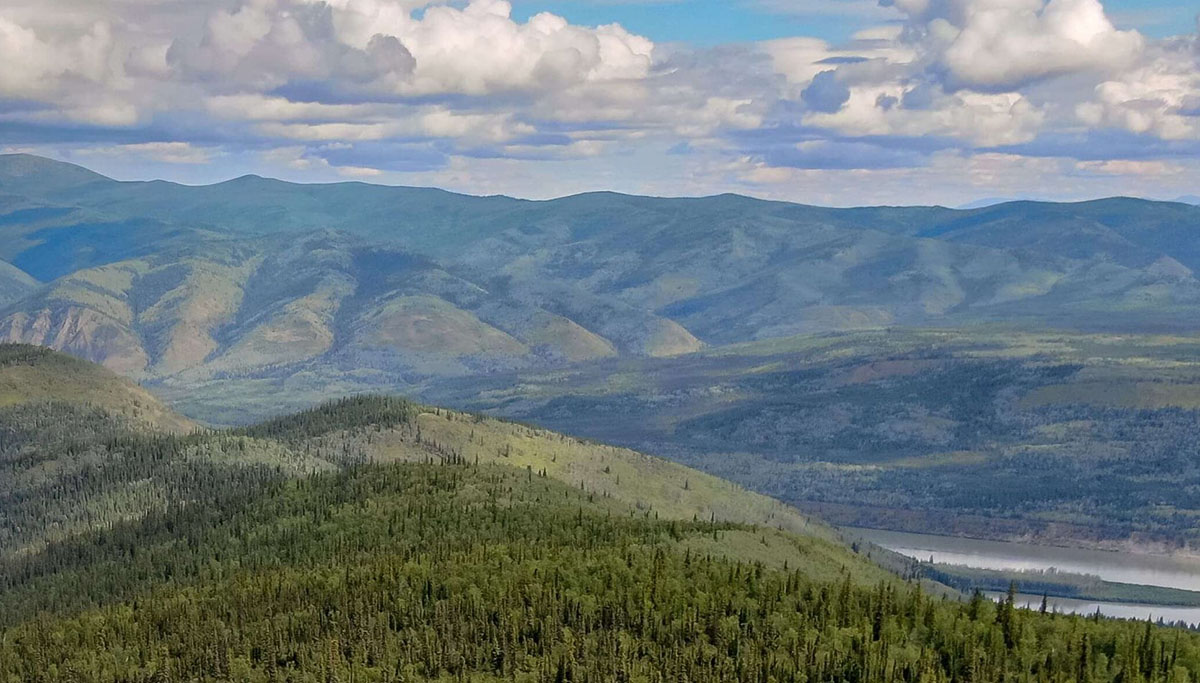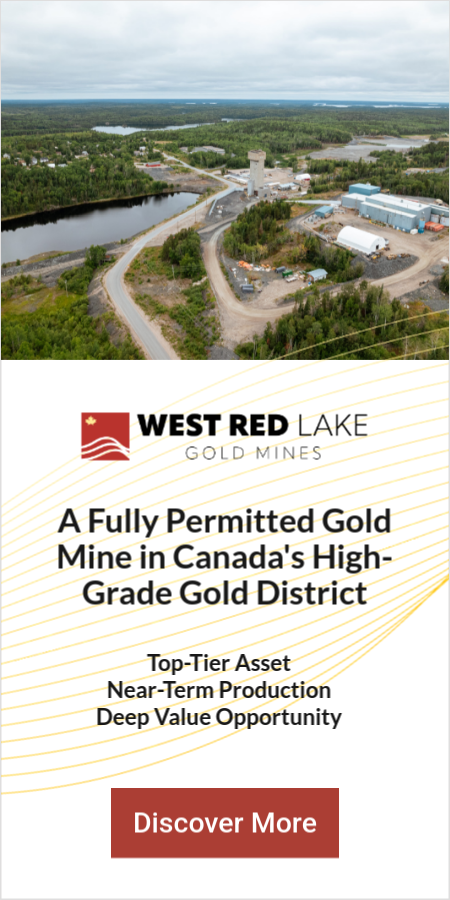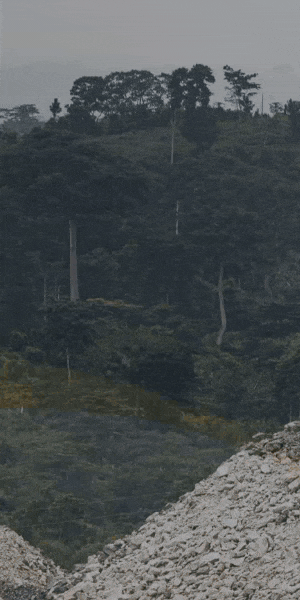Ultra-High-Grade Core Discovery Accelerates White Gold's Development Timeline in Canada's Last Frontier

White Gold: 3M oz Yukon resource with ultra-high-grade core, $23M financing for 10x larger drill program, PEA H1 2026, Agnico backing, targeting 4-5M oz in underexplored district
- White Gold Corp controls 300,000 hectares in Yukon's Klondike district with a 3 million ounce gold resource at 1.38 g/t, featuring an ultra-high-grade core of 700,000 ounces at 5 g/t
- Recent resource update showed 44% increase in indicated category through structural reinterpretation and identification of parallel hanging wall and footwall zones
- Company closed $23 million financing to fund 25,000-meter drill program (versus historical 3,000-meter programs), targeting resource expansion and high-grade zone extensions
- Preliminary Economic Assessment expected H1 2026 will evaluate starter pit economics; company also planning spinout of copper-gold porphyry assets adjacent to Western Copper's Casino project
White Gold Corp operates in what industry observers increasingly view as one of the last great frontiers in Canada, controlling a massive 300,000-hectare land position in Yukon's historic Klondike district where over 20 million ounces of placer gold have been mined but modern exploration only began 15 years ago. CEO David D'Onofrio recently outlined the company's evolution from a 2016 startup to a developer with a substantial 3 million ounce gold resource, backed by major mining company Agnico Eagle and positioned to capitalise on renewed interest in Canadian mining jurisdictions.
The timing appears opportune. Gold prices have been rising for two years, but D'Onofrio notes that capital typically flows first to major producers, then mid-tiers, then developers, and finally to junior explorers, a cycle that takes approximately 18 months to fully materialise. With the Yukon jurisdiction regaining favour following Victoria Gold's resolution and neighbouring Snowline Gold's 9 million ounce discovery, White Gold finds itself at the intersection of strong commodity prices, improved jurisdictional sentiment, and significant technical progress on its flagship Golden Saddle deposit.
The Genesis: Strategic Assembly and Partnership
White Gold Corp was founded in 2016, coinciding with Goldcorp's $520 million acquisition of the Coffee deposit from Kaminak Gold. That discovery was made by Shawn Ryan and his team using proprietary exploration protocols, and Ryan subsequently surveyed the entire district over 110 kilometers north to south, cherry-picking the best opportunities to assemble into the White Gold land package.
D'Onofrio's PowerOne Capital, a Toronto-based merchant bank with over 20 years of mining investment experience, partnered with Ryan to create the vehicle. The strategic rationale was compelling: jurisdiction quality, outsized discovery potential, and the ability to attract major company support. Agnico Eagle came in as a 19% shareholder and has maintained that position throughout, offering not just capital but access to sophisticated technical expertise critical for a junior company.
The partnership structure has proven durable. D'Onofrio and PowerOne own just under 20% of the company, their close network owns another 15-20%, creating significant insider alignment with public shareholders.
Technical Breakthrough: The Ultra-High-Grade Core
The company's flagship Golden Saddle deposit now hosts 3 million ounces at 1.38 grams per ton, the highest-grade open-pit resource in the Yukon. However, the most significant recent development involves structural reinterpretation that revealed exceptional high-grade domains within the broader resource.
Dylan Langille, recently hired from Great Bear Resources' discovery team, identified an ultra-high-grade core containing 1.1 million ounces at approximately 3 g/t, with 700,000 ounces grading 5 g/t that remains open for expansion. This discovery emerged from a comprehensive data review revealing that historical drilling by Underworld Resources (later acquired by Kinross) had never been fully analysed after the initial acquisition.
The technical work leading to the recent 44% increase in indicated resources involved multiple elements: relogging and reanalysing historical core, rebuilding wireframes to improve geological continuity, adjusting cutoff grades to 0.3 g/t, and most importantly, identifying parallel hanging wall and footwall zones flanking the main mineralised structure. D'Onofrio noted that 7,000 meters of drilling - 12% of the total 60,000 meters completed was never assayed, representing immediate opportunities for resource expansion without additional drilling costs.
Capital Inflection: From Survival Mode to Growth
For several years, White Gold pursued what D'Onofrio characterises as a strategic holding pattern. Rather than suspending work entirely during challenging capital markets, the company conducted modest 3,000-meter drill programs focused on discovering new zones within 10 kilometers of Golden Saddle rather than systematic resource expansion. This approach yielded a dozen identified targets with small resources published on three or four, creating a pipeline for future work.
The strategy has now shifted dramatically. The company recently closed a $23 million financing that will fund an approximately 25,000-meter drill program - nearly ten times larger than recent programs. This capital inflection enables simultaneous pursuit of multiple objectives: extending the ultra-high-grade zone at depth, drilling the footwall zone, and returning to earlier discoveries for systematic expansion.
The first results from the current program validate the new approach. A recent hole successfully intersected all three targeted zones (hanging wall, main zone, and footwall) but exceeded expectations in the main zone, drilling 50 meters at 6.9 g/t - the highest grades ever encountered to date, located 60 meters from the nearest historical hole.
Interview with David D'Onofrio, CEO of White Gold Corp.
Economic Pathway: From PEA to Production
The company is now accelerating toward a Preliminary Economic Assessment targeted for release in the first half of 2026, with engineering studies identifying opportunities for a smaller starter pit focusing on the high-grade core at surface to accelerate first production. The metallurgy supports this approach. The ultra-high-grade material shows approximately 92% recovery rates. The current pit design extends to 450 meters depth, though the orebody continues beyond that - limited only by drilling depth rather than geological constraints.
D'Onofrio recounted advice from Australian advisors four years ago:
"You Canadians make us laugh. All you guys like to do is drill for the sake of drilling and growing. You have a million ounces at three grams - that's a mine. You should start mining that today."
While the company didn't pursue immediate development then, the current market environment and enlarged resource base have shifted the calculus toward accelerated economic studies.
District-Scale Potential and Portfolio Strategy
Beyond Golden Saddle, White Gold's enormous land position hosts multiple development opportunities. The Arc deposit contains 300,000 ounces spread over 1.5 kilometers but has only been drilled to 100 meters depth. Historical metallurgical work was less comprehensive than Golden Saddle, but recent studies at $1,800 gold showed break-even economics using decade-old test work, suggesting significant upside with updated analysis.
The Betty property, contiguous to both the Coffee project (now owned by Fuerte Metals and advancing to production) and Western Copper's Casino project (20 million ounces gold and 14 billion pounds copper), has returned discovery holes including 20 meters of 5 g/t, 50 meters of 3.5 g/t, and 15 meters of 3 g/t.
Recognising that the market may not fully value these earlier-stage copper-gold porphyry targets alongside the advanced gold project, White Gold is preparing to spin out these assets into a separate vehicle. This structure would allow specialised teams to advance each opportunity while potentially unlocking value for shareholders who currently receive limited credit for the district-scale potential.
Jurisdictional Advantages and Infrastructure
The Yukon's return to favour among major mining companies represents a significant de-risking for White Gold. D'Onofrio notes that the same geological belts running from Alaska through Yukon into British Columbia have shown tremendous productivity in Alaska and BC, but the Yukon has been underexplored, with investment levels showing almost one-to-one correlation with discovery rates.
The Coffee project's advancement provides a critical proof point. Now owned by Fuerte Metals with backing from Agnico Eagle and Wheaton Precious Metals, the project has secured permits and is advancing toward production. The Tr'ondëk Hwëch'in First Nation has been supportive throughout the process, building on a century-long relationship with the placer mining community. For White Gold, having a neighbouring project successfully navigate permitting and attract major company investment validates both the geological potential and the social license to operate.
Market Positioning and Valuation
Despite the technical progress and enlarged resource base, D'Onofrio acknowledges that White Gold has traded at a "pretty significant discount" to peers - partly due to limited market awareness. The company historically relied on Agnico Eagle and PowerOne Capital for financing, never developing street coverage, sales, or trading support because programs were small enough to be internally funded.
The recent $23 million financing deliberately included institutional investors to leverage their networks and potentially secure research coverage. Combined with increased outreach efforts and the forthcoming PEA, management aims to close the valuation gap as the market better understands both the ultra-high-grade core economics and the district-scale exploration potential.
Conclusion: Inflection Point Ahead
White Gold Corp stands at a clear inflection point. The company has transitioned from survival mode during challenging markets to a well-funded developer with clear catalysts ahead: ongoing drill results from the enlarged program, a PEA due in H1 2026, potential research coverage, and the spinout of copper-gold assets. The ultra-high-grade core discovery fundamentally improves the Golden Saddle economics, while the massive land position and early-stage discoveries offer district-scale upside that few junior companies can match.
D'Onofrio believes 4-5 million ounces is "very reasonable," with potential pathways to 7-10 million ounces if the orogenic deposit system connects at depth across the multiple nearby deposits. For investors seeking leveraged exposure to rising gold prices in a favourable jurisdiction with major company validation, White Gold presents a compelling opportunity to capture value as the market reprices the asset from exploration discovery toward development economics.
The Investment Thesis for White Gold
- High-Grade Economics: 3 million ounce resource at 1.4 g/t includes ultra-high-grade core of 700,000 ounces at 5 g/t with 92% metallurgical recoveries, highest-grade open-pit resource in Yukon with potential for rapid payback starter pit
- Significant Resource Growth Potential: Only 60,000 meters of drilling completed versus 600,000 meters at neighboring Coffee deposit; 12% of historical drilling never assayed; multiple parallel zones and extensions identified; management targets 4-5 million ounces as "reasonable"
- Major Company Validation: Agnico Eagle maintains 19% strategic position since founding; neighboring Coffee project backed by Agnico and Wheaton advancing to production; validates both geology and permitting pathway
- Capital Inflection Point: Recent $23 million financing enables 25,000-meter program versus historical 3,000-meter programs; first material exploration campaign with funds to systematically test multiple high-probability targets simultaneously
- District-Scale Land Position: 300,000 hectares (versus typical 10,000-20,000 for juniors) with dozen identified targets, early-stage discoveries, and copper-gold porphyry potential adjacent to 20-million-ounce Casino project to be spun out
- Near-Term Catalysts: Ongoing drill results from current program; PEA in H1 2026 demonstrating starter pit economics; potential research coverage; copper-gold spinout creating separate value recognition
- Valuation Discount: Trading at significant discount to peers despite superior grade, major company backing, and clear development pathway; limited historical market awareness due to insider financing now being addressed
- Jurisdictional Momentum: Yukon regaining favor post-Victoria Gold resolution; Snowline's 9-million-ounce discovery and multiple major companies entering region validates underexplored potential; supportive First Nations with century-long mining history
Macro Thematic Analysis
The Yukon exemplifies a broader investment opportunity in overlooked Canadian mining districts where geological prospectivity matches proven belts but exploration spending has lagged dramatically. The same rock formations running from Alaska through Yukon into British Columbia have demonstrated tremendous productivity in Alaska and BC, but Yukon exploration has been comparatively minimal, with discovery rates showing nearly one-to-one correlation with investment levels rather than geological potential. As major mining companies confront declining reserve bases and limited new district-scale discoveries globally, these Canadian frontiers offer rare opportunities for significant resource additions in stable jurisdictions with established infrastructure and supportive communities. The recent entry of multiple majors into the Yukon, combined with substantial discoveries like Snowline's 9-million-ounce Valley deposit, signals capital reallocation toward these overlooked regions.
"It's an opportunity to be invested in a camp similar to the early days of owning a big position in Val-d'Or, Timmins, or something like that... this would be akin to being able to go back in time and own a land package as large as this."
TL;DR: Executive Summary
White Gold Corp controls 300,000 hectares in Yukon's Klondike district with a 3-million-ounce resource featuring an ultra-high-grade core (700,000 oz at 5 g/t) that positions the company for robust starter-pit economics. A recent $23 million financing enables a 25,000-meter drill program - ten times larger than historical programs, targeting resource expansion toward 4-5+ million ounces while a PEA due H1 2026 will quantify the economic advantages of the high-grade material. Strategic backing from Agnico Eagle (19% shareholder) and successful permitting of the adjacent Coffee project de-risk development pathways in a jurisdiction experiencing renewed major company interest.
FAQ's (AI Generated)
Analyst's Notes




Subscribe to Our Channel
Stay Informed



































